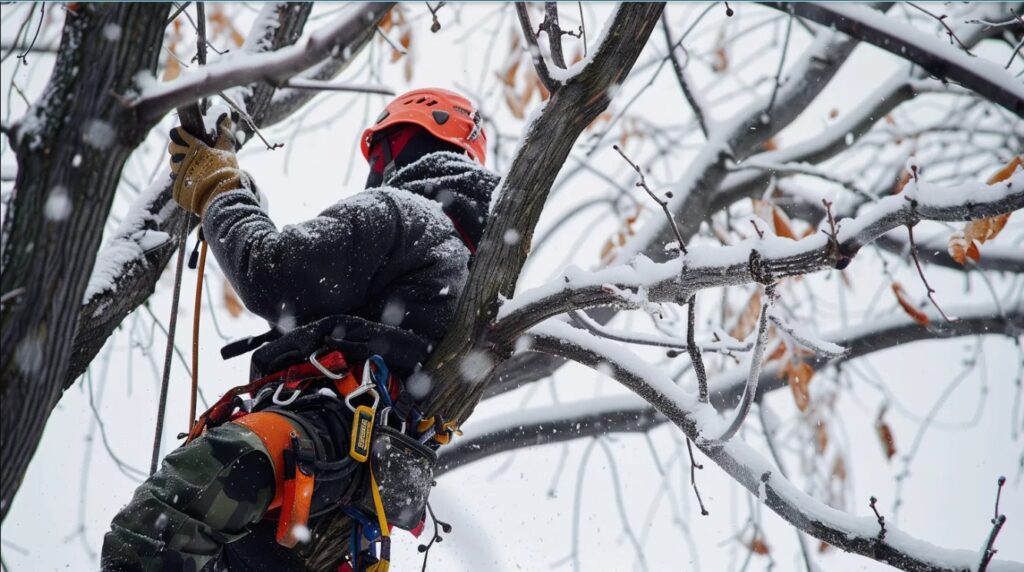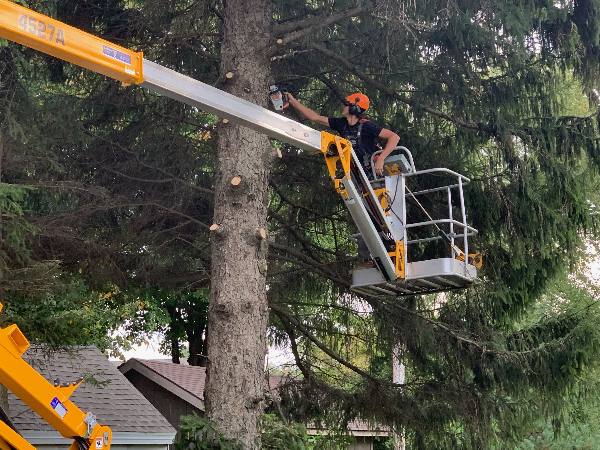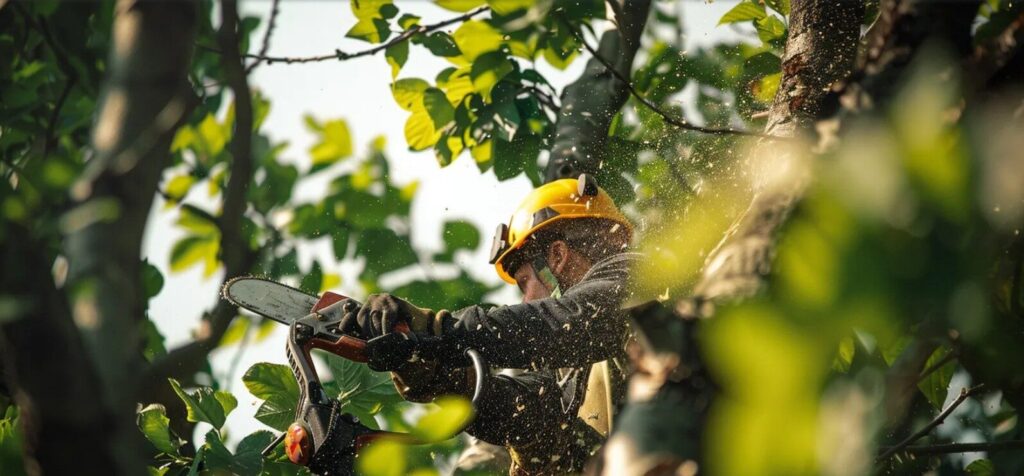
Unlocking the Benefits of Winter Tree Pruning
Are your treesstruggling with disease, damage from winterstorms,or poor growth? Winter pruningis a crucial tree carepractice that can enhance treevitality and prevent future issues. In this guide, we’ll cover the importance of winter pruning, steps for effective pruning, and post-pruningcare. You’ll learn how to improve your trees‘ health, promote better leafgrowth, and when to consult an arborist.
Understanding the Importance of Winter Pruning
Winter pruningplays a crucial role in enhancing treehealthand vitality. During the dormant season, treesare less susceptible to pests and diseases like oak wilt, making it an optimal time for pruning.
You’ll learn how to recognize the best timing for winter pruning, ensuring your treesbenefit from this essential maintenance practice while minimizing risks from insects and other threats.
How Winter PruningEnhances TreeHealth
Winterpruningenhances treehealthby taking advantage of the dormant period in deciduoustrees. During this time, you can easily identify the tree‘s structure and make precise cuts without the obstruction of leaves.
Pruningduring dormancyalso allows treesto heal more efficiently before the growing season begins. You’ll notice that fruit tree pruningin winterstimulates stronger buddevelopment and encourages better fruitproduction in the following year. By removing dead, diseased, or crossing branches, you create a healthier landscapethat’s more resistant to pests and environmental stressors.
The Dormant Season Advantage for Trees
During the dormant season, treesexperience reduced metabolic activity, making it an ideal time for pruning. You can take advantage of this period to shapethe canopyof various species, including fruittrees, without causing undue stress. The absence of leaves allows you to clearly see the tree‘s structure, enabling more precise cuts and better management of the overall form.
Winter pruningalso helps prevent the spread of diseases like fire blight, which can easily infect fresh cuts during the growing season. This practice is particularly beneficial for fruittrees, as it promotes stronger woodgrowth and improves fruitproduction in the following season.
Maximizing TreeVitality Through Winter Pruning
Winter pruningmaximizes treevitality by promoting healthy spring growth, reducing pestrisks, and improving treeshapeand structural integrity. You’ll learn how to stimulate new growth, minimize vulnerability to infections, and enhance your trees‘ overall form. These techniques ensure your treesthrive in the coming growing season.
Reducing the Riskof Diseases and Pests
Winter pruningreduces the riskof diseases and pests by removing potential entry points for pathogens. You can eliminate diseased or infested branchesbefore problems spread, effectively containing issues like fungal infections or insectinfestations.
This proactive approach helps maintain treehealthand prevents the need for more extensive treatments later. During winter pruning, you can easily spot and remove dead or damaged wood, which often harbors pests and diseases.
By pruningwhen treesare dormant, you minimize sapflow and reduce the attraction for insects that might be drawn to fresh cuts. This timing also allows pruningwounds to heal before the growing season, further decreasing vulnerability to pests and pathogens.
Improving TreeShapeand Structural Integrity
Winter pruningimproves treeshapeand structural integrity by allowing you to see the tree‘s framework clearly without leaves. You can identify and remove branchesthat are growing at weak angles, crossing other branches, or disrupting the tree‘s natural form. This strategic pruningenhances the tree‘s overall structure, making it more resistant to winter stormdamage and reducing the riskof branchfailure.
Post-PruningCare for Your Trees
After winter pruning, proper post-pruningcare is essential for your trees‘ recovery and long-term health. You’ll need to monitor treerecovery, apply mulchfor protection, and schedulefuture maintenance checks. These steps ensure your pruned treesthrive and maintain their improved structure and vitality throughout the year.
Monitoring TreeRecovery After Pruning
After winter pruning, monitor your treesclosely for signs of recovery. Check for new budformation and leafgrowth in the spring, which indicates successful healing. You should also inspect pruningcuts regularly to ensure they’re closing properly without signs of decay or infection.
Pay attention to the overall treestructure as it recovers. Look for any unexpected growth patterns or weak branchesthat may have been missed during pruning. If you notice any issues, consider scheduling a follow-up pruningsession to address these concerns and maintain the tree‘s improved form.
Mulching and Protecting Pruned Trees
After winter pruning, apply a 2-3 inchlayer of organic mulcharound your trees‘ base, extending to the drip line. This layer helps retain soilmoisture, regulate temperature, and suppress weed growth. Ensure the mulchdoesn’t touch the trunkto prevent moisture buildup and potential rot.
Protect your pruned treesfrom winterdamage by wrapping young or thin-barked treeswith treewrap or burlap. This shields them from sunscald and frost cracks.
Scheduling Future Maintenance Checks
Scheduleregular maintenance checksfor your pruned treesthroughout the year. Plan for a spring inspection to assess new growth and address any winterdamage. Conduct another check in late summer to evaluate overall treehealthand identify any potential issues before winter.
During these maintenance checks, examine the tree‘s structure, look for signs of pests or diseases, and assess soilconditions. If you notice any concerns, such as weak branchunions or unusual leafdiscoloration, consult with anarboristto determine the best course of action. Regular inspections help maintain the benefits of winter pruningand ensure your treesremain healthy and structurally sound.
Frequently Asked Questions About Winter Pruning
Explore common questions about winter pruningto enhance your tree careknowledge. Learn which speciesbenefit most from winter pruning, how much to prune, and whether this practice is suitable for all climates. These insights will help you make informed decisions to improve your trees‘ healthand structure.
Which TreeSpeciesShould Be Pruned in Winter?
You should prioritize pruningdeciduoustreeslike oak, maple, and birchduring winter. These speciesbenefit from dormant-season pruningas they’re less susceptible to diseaseand pestinfestations when leafless. Winter pruningalso allows you to easily see the tree‘s structure, making it simpler to identify and remove problematic branches.
While most deciduoustreesthrive with winter pruning, you should avoid pruningspring-flowering treeslike dogwood and redbud during this time. These speciesform their flowerbuds in the previous growing season, so winter pruningcan reduce spring blooms.
When is the best time to prunetreesduring winter?
The best time to prunetreesduring winteris typically in late winter, just before spring growth begins. This period allows for easier identification of treestructure, minimizes saploss, and promotes rapid healing of pruningcuts when new growth starts.
Can winter pruningharm my trees?
Winter pruningcan potentially harm treesif done improperly or at the wrong time. However, when performed correctly during dormancy, it can promote healthy growth and structure.
How do I care for my treesafter winter pruning?
Afterwinter pruning, care for your treesby applying a protective sealant to cut areas, mulching around the base to retain moisture, and providing adequate waterduring dry spells.




